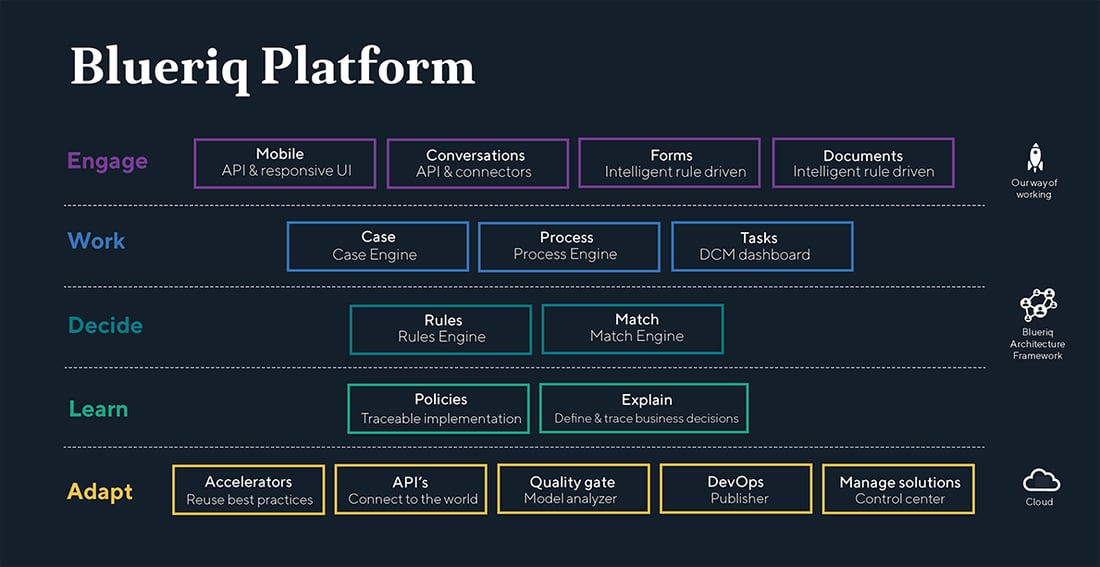We know our technology inside out and love to share it with business engineers, architects and developers. Take a look at our roadmap and see what we're working towards now. Or check out our Research page and get an idea of our research projects.
Each item on our roadmap is linked to one of the categories within our platform, namely Engage, Work, Decide, Learn and Adapt. You can see on this image what each category enables. And so we are continuously enriching that, as you can see in our roadmap.

We are exploring how to increase the transparency and understandability of decisions made in Blueriq applications for end users.
Quickly and easily unlock decisions with this new project type in Encore.

The Blueriq platform is designed to represent a wide range of organizational policies and processes in an executable model. This is made possible in a flexible way that supports a broad array of use cases and is also reusable... and we could keep going on with the list. All of these possibilities make the Blueriq platform powerful, but they can also feel overwhelming.
Especially when you want to create a service that makes a single decision. However, this could still be backed by a complex decision-making model, such as conducting risk assessments, determining prices, approving loans or subsidies, and so on. We believe that using the rule engine in its purest form can be made easier with the help of a new project type in Encore: Knowledge Service. This focuses on modeling business rules. The creation of interfaces (in Blueriq terms: REST service, web service, domain schema, modules) is done as automatically as possible. In this way, limiting options opens up new opportunities!
We are exploring how to increase the transparency and understandability of decisions made in Blueriq applications for end users.

Explaining Decisions
With Blueriq, complex solutions are often created. When something is rolled out based on given input—whether it's a result, judgment, or decision—the (end) customer doesn't always know how this answer was reached. In a time when AI is playing an increasingly larger role, it’s becoming more essential to explain why something happens. The answer itself, even if it comes from an approved system, is no longer enough.
How can we enable knowledge workers to learn and collaborate on sensitive cases through matching and homomorphic encryption?

In conversations we have with our clients, we sometimes hear that it is difficult for knowledge workers to make consistent decisions across different cases. Sometimes this is due to the variety of cases, but other times it is due to the (privacy) sensitivity of a case.
This is precisely the challenge we want to investigate with the following hypothesis:
Can we, through matching combined with homomorphic encryption, enable the recognition of patterns across cases and return key insights/results to knowledge workers without sharing sensitive information, but instead sharing data patterns and results?
Do you have questions about new developments or are you curious about all the possibilities of the Blueriq platform? If so, please contact Yuri.